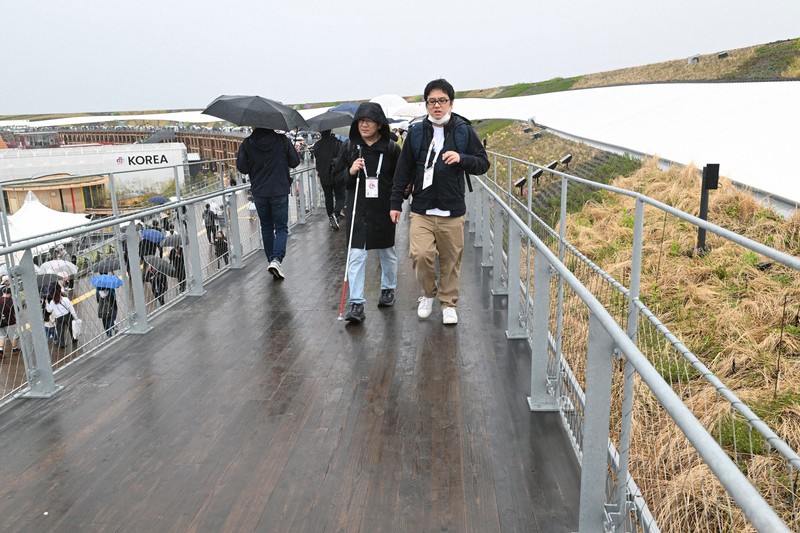OSAKA – Being a totally blind journalist for the Mainichi Shimbun, I found myself disoriented and bewildered on top of the “Grand Ring,” the expansive structure surrounding the Expo 2025 Osaka, Kansai site. This confusion arose because the tactile guide paths I depended on abruptly came to an end.
I followed the raised linear Braille blocks, which guide the way, for approximately a 2-kilometer loop. Ultimately, I arrived at a spot where these directional tiles abruptly ended.
The walkway, about 12 meters above ground, split into two, one branch a slope going up to the highest level, some 20 meters high. At the fork, a series of dotted tactile warning tiles — meant to alert pedestrians to use caution — span the pathway, but no directional guide tiles follow beyond this point. I was unaware of this until informed by a sighted reporter who accompanied me.
The circular shape of the rooftop walkway itself creates a barrier for blind visitors like myself, making it impossible to know one’s precise location within the endless loop. I found no braille signage on the corridor’s handrails, nor any audible guidance.
In the 1960s, Japan introduced tactile paving as a groundbreaking method to improve navigation and safety for individuals with visual impairments. Designed to symbolize unity amid diversity, the Expo’s circular building claims the title of one of the biggest timber structures globally. Since opening on April 13th, this location aims to serve as an equitable environment accessible to all visitors, regardless of their physical abilities. However, it seems that event planners may be missing out on incorporating that final touch of creativity required to ensure true inclusivity.
(Japanese original by Ayato Saki, Braille Mainichi Department)




